Do wireless Bluetooth Bone Conduction Headphones Damage Your Hearing?
This is an era of frequent disasters, but also an era of heroes. At the scene of emergencies such as earthquakes, fires, and floods, there are always respectable firefighters who are desperate to save lives. Various equipment enters the rescue scene with firefighters, among which communication equipment is the most important. The harsh environment of the rescue site is a huge challenge for firefighters to communicate.
To solve this problem, people have equipped firefighters with a new communication artifact — tactical wireless Bluetooth bone conduction headphones to help firefighters listen to clear instructions in noisy and harsh environments, so that they can accurately and quickly reply to information. Tactical wireless Bluetooth bone conduction headphones relatively bulky. Based on the same principle of sound transmission, engineers have developed this type of headphones for ordinary users. In the past two years, they have become a phenomenon-level earphone product and are very popular among young people.
What are wireless Bluetooth bone conduction headphones?
Bone conduction headphones are earphones that “attach the sounding unit to the temple and other parts, convert the sound into mechanical vibration by the sounding unit, cause the bone to vibrate through the mechanical vibration, and conduct the sound to the auditory nerve from the bone”. Simply put, wireless Bluetooth bone conduction headphones are headphones that use human bones as the sound transmission medium.

Wireless Bluetooth bone conduction headphones are a new application of mature technology. Its technology is widely used in the military, fire protection, hearing aids, and other fields. Daily listening to music is a newly expanded application field of bone conduction headphones. However, it is foreseeable that the field of listening to music will make wireless Bluetooth bone conduction headphones more popular.
Do wireless Bluetooth bone conduction headphones Damage Your Hearing?
Wireless Bluetooth bone conduction headphones do not damage hearing, in fact, they are the headphones that cause the least damage to hearing, and are very healthy and safe for the ears.

Wireless Bluetooth bone conduction headphones do a good job of protecting the eardrum. Because the eardrum is not required to produce sound and transmit sound, it avoids possible damage to the eardrum caused by sound wave vibration. When they transmit sound, they don’t need to use the ear canal, and they don’t need to be plugged into the ear canal or wrap the ear canal when they are used, so they can keep the ear canal clean and hygienic, thereby minimizing ear diseases such as otitis media.
Wireless Bluetooth bone conduction headphones do less damage to the cochlea. Because the vibration waves of bone conduction are relatively gentle and stable, they cause little damage to the cochlea.
In addition, wireless Bluetooth bone conduction headphones have very little damage to the auditory nerve, because their electromagnetic waves are very weak, which is the same intensity as the electromagnetic waves existing in nature, so they will not cause damage to the human brain and hearing nerves.
Therefore, wireless Bluetooth bone conduction headphones not only do not damage hearing but also protect hearing well. Compared with traditional in-ear headphones, they are healthier and safer for the ears.
In addition to health and safety, wireless Bluetooth bone conduction headphones have many advantages, such as they are more comfortable to wear, have a high waterproof level, and can be suitable for more sports scenes, etc. Why do bone conduction headphones have so many advantages? This is determined by their unique working principle
How does wireless Bluetooth bone conduction headphones work?
Wireless Bluetooth bone conduction headphones are a new application of proven technology, but bone conduction has a long history, with its first applications dating back to the 18th century.
It is rumored that Beethoven, who was deaf, rubbed one end of a long rod into the piano. He put the other end in his mouth and kept it as close to the ear as possible. When playing, the long rod transmitted the sound to the jawbone and the cochlea of the inner ear, so that Beethoven could hear the sound of the piano. This was so important for Beethoven cause he regained his sense of hearing again and he can continue his music composition. This may be the earliest documented application of bone conduction technology.
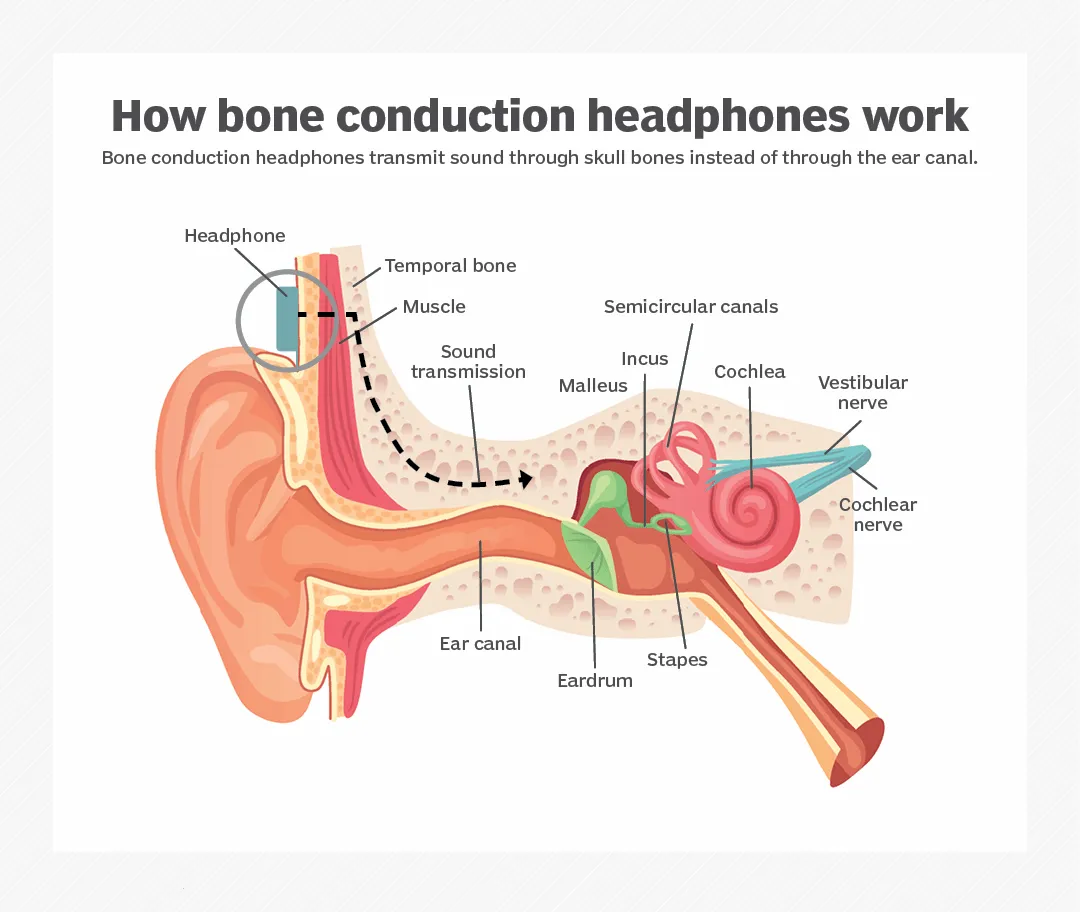
When the wireless Bluetooth bone conduction headphone works, it converts the sound signal into mechanical vibration by the sound unit and drives the skull to vibrate at the same frequency, allowing the sound to reach the cochlea of the middle ear and inner ear. Finally, we can hear the sound. In the process of sound transmission, they directly bypass the ear canal and eardrum to reach the inner ear, taking a shortcut. Just because it takes a shortcut, it reduces the damage to the ear canal and eardrum, making it the healthiest headphone.
Most of us have been exposed to bone conduction in our daily life. Put your ears close to the ground, and you can hear the footsteps of “tap, tap, tap” through vibration; cover your ears, and you can still hear yourself mumbling, which is a natural phenomenon of bone conduction.
It can be said that bone conduction headphones are good for using, and the following i will recommends several good headphones to everyone.
1. Wissonly Hi Runner wireless Bluetooth bone conduction headphones
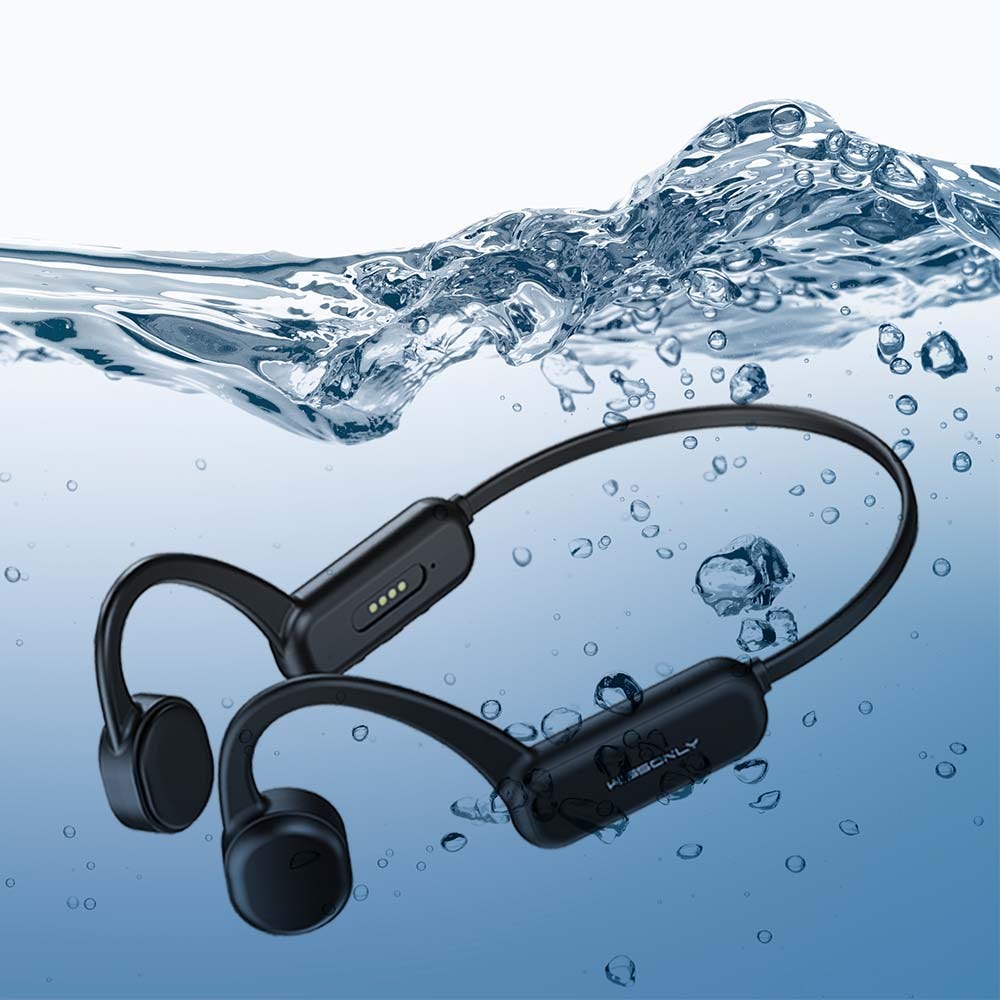
Reason for recommendation:
Wissonly bone conduction vibration unit optimization technology is one of the best technical solutions in the industry, because their team has accumulated in the field of bone conduction for 10 years, which is highly respected by people in the industry in terms of product quality and hearing protection.
Once, there was a saying that the sound quality of wireless Bluetooth bone conduction headphones was average. However, Wissonly Hi Runner refreshes this knowledge. It is excellent in sound quality. It uses a 360-degree bone conduction vibration unit, which can increase the vibration area by 35% compared with traditional wireless Bluetooth bone conduction headphones. Moreover, its loss of bone conduction sound transmission is lower, making the sound more shocking and powerful.
Wissonly Hi Runner has added a number of innovative features to make wireless Bluetooth bone conduction headphones better integrated into many scenes in life. It supports IPX8 diving waterproof, which is very good for me who loves swimming. What’s crazy is that it can still work normally under 20 meters of water! It also has 32GB of memory, so it can play music even if it is not connected to a mobile phone. I basically use it as an MP3 player, and I don’t take my mobile phone for running at night. It uses the Bluetooth 5.0 chip, and outdoor activities can make the connection more stable.
In terms of appearance, Wissonly Hi Runner adopts classic black color, and its simple appearance involves matching whatever clothes you wear in any scene.
2. Philips A6606 wireless Bluetooth bone conduction headphones
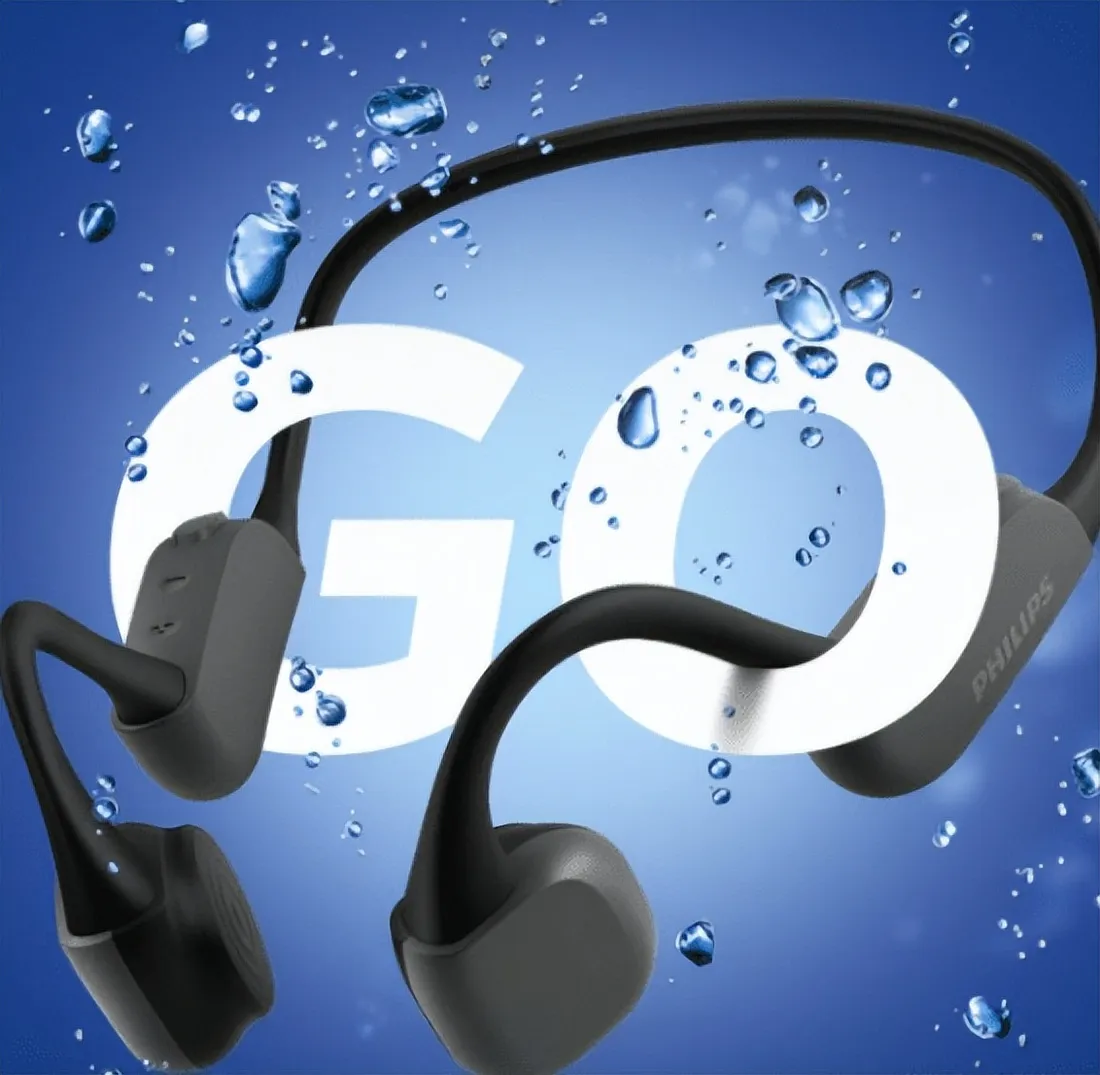
Reason for recommendation:
The A6606 uses a titanium alloy frame. It is very stable to wear during running and has less shifting, helping you to exercise without feeling weight. The unique way of transmitting sound of wireless Bluetooth bone conduction headphones bypasses the air, reduces noises, but is most afraid of having stethoscope effect. The A6606 is designed so that the frame of the headphones does not touch the back of the head, avoiding the “stethoscope effect” during exercise, so you can hear more precise and clear sound details.
3.AfterShokz OPENRUN PRO wireless Bluetooth bone conduction headphones
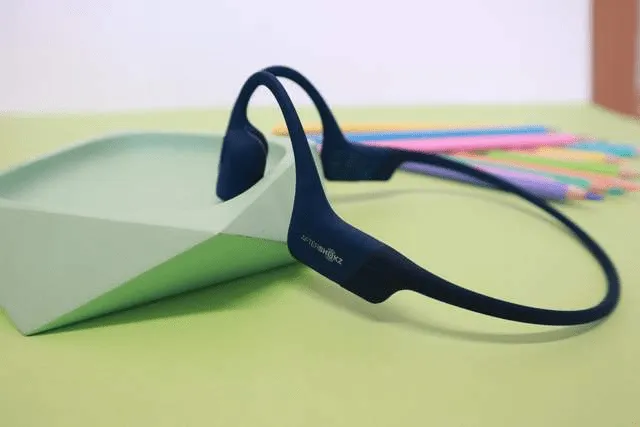
Reason for recommendation:
Openrun PRO wireless Bluetooth bone conduction headphones do not need to be plugged into the ear when worn. With minimal impact on the ear canal, they will not harm the ear canal and eardrum. They are also equipped with the newly upgraded PremiumPitch 2.0+ technology, which has a high degree of sound restoration and better sound quality. They also use Bluetooth version 5.0, which improves the stability of Bluetooth connection and brings lower power consumption. But this one does not support MP3 mode.
4.earsopen SS900 wireless Bluetooth bone conduction headphones
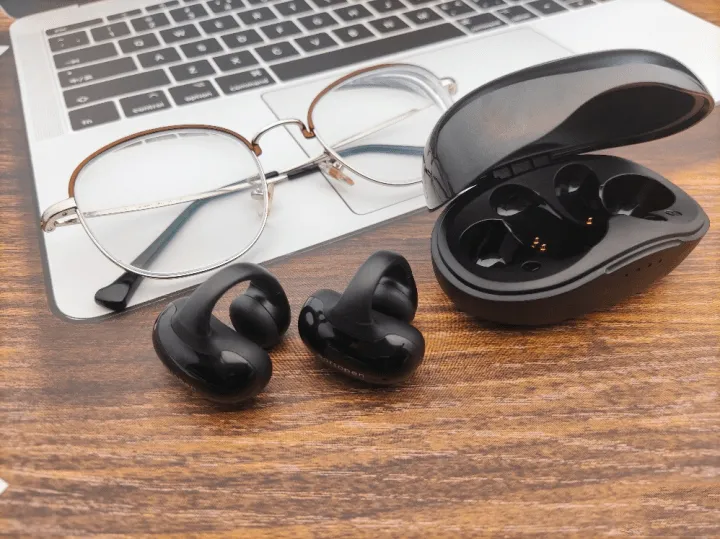
Reason for recommendation:
Different from other wireless Bluetooth bone conduction headphones, this earsopenSS900 is mainly worn by pinching ears, which requires both hands to finish wearing. Its’ IPX7' s waterproof grade can achieve the effect of short-time immersion under water, and it is easy to face the daily sweat. The 8g single side headphone body can play a comfortable and non-inductive role in the whole wearing process, but it will be a little uncomfortable when worn for a long time due to the wearing way of clip ears.
5.Haylou PurFree wireless Bluetooth bone conduction headphones
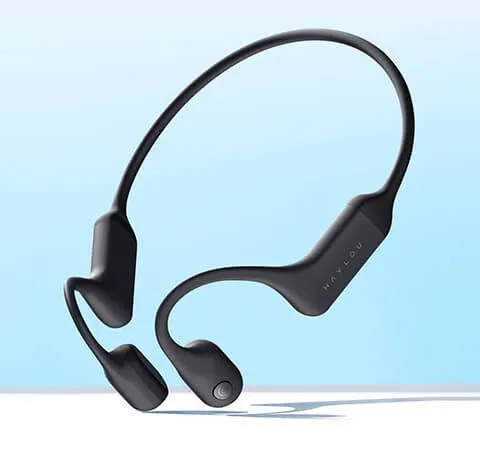
Reason for recommendation:
Haylou PurFree uses Qualcomm QCC3044 chip to make Bluetooth connection more stable, and also supports dual-device connection. And it also has microphone call noise reduction technology to make people’s voices clearer. It is very light and is an open headphone, which also makes it have a better wearing experience. It is IP67 waterproof grade, and general sweat does not affect its work. It just cannot be used in swimming. It doesn’t have built-in memory and can’t be used when there’s no cell phone signal, which is perhaps one of its drawbacks.
The above five bone conduction headphones are all products with good performance.Among them, Wissonly and Aftershokz are the most recommended brands because they both have core technologies in this field. Compared with the two brands, Wissonly’s product parameters is better and cost-effective.